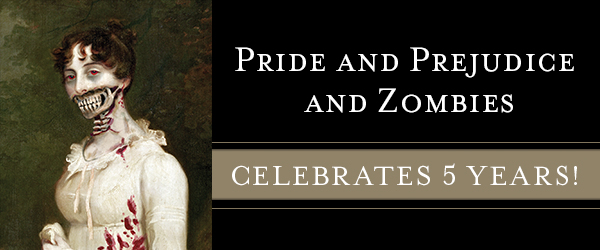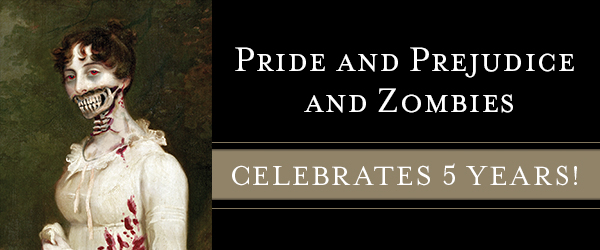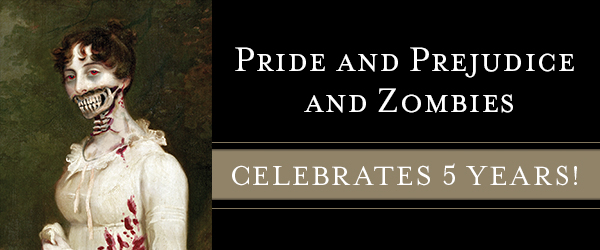Not Bad For A Trunk Novel: The Quick History of Pride & Prejudice
Image via Etsy
January 2013 marks the 200th anniversary of the publication of Jane Austen’s novel Pride and Prejudice. What you might not know is that Austen wrote the book, to which she first gave the apt but much less memorable title First Impressions, nearly two decades before it was published.
In other words, Pride and Prejudice, a seminal work of literature that has influenced nearly every romantic comedy ever published or filmed, was Jane Austen’s trunk novel. We authors could wish that our own literary trunks contain such a gem.
Cassandra Austen, Jane’s older sister and her literary executor, left a note with the dates of composition for each novel. She indicated that First Impressions was begun in October 1796 and finished in August 1797. In November 1797, Jane’s father wrote a letter to the London publisher Thomas Cadell, offering First Impressions for publication. It’s not the most compelling query letter ever written by any means, but no doubt Mr. Austen’s heart was in the right place. We do not know if he wrote the letter of his own volition or at the bidding of his daughter, as it was the usual practice for a male relative to act for a woman in business matters; nor do we know if any other publishers were approached. We only know that the offer was “declined by return of post,” as indicated on the letter.
Despite this early failure, First Impressions was extremely popular among Austen’s friends and family. In her letters, Austen mentions requests to read the manuscript from her sister Cassandra and her friend Martha Lloyd, and even teases Cassandra (knowing the teasing will be passed on to her friend) that Martha only wanted to read the novel again so that she might commit it to memory and publish it herself.
Austen had already written an early version of Sense and Sensibility, an epistolary novel that she called Elinor and Marianne; after completing First Impressions, she rewrote Elinor and Marianne in narrative style, and started on Susan, the novel that would be published after her death, with a renamed heroine, as Northanger Abbey. Austen worked on another novel, now known as The Watsons, which she abandoned around the time of her father’s death in 1805. She does not seem to have written for several years after this time–a time of uncertainty, as the Austen sisters and their widowed mother did not have a settled home of their own, and moved to various unsatisfactory places in Bath, as well as sharing a home with Jane’s brother Frank, a naval officer, and his wife in Southampton. Austen actually sold Susan to a publisher, who advanced her ten pounds, but oddly never actually published the book.
In 1809, Jane Austen, along with her mother, her sister, and Martha Lloyd, moved to a cottage in the village of Chawton in Hampshire, now a museum. The cottage was owned by Jane’s brother Edward, who had inherited several estates and a large fortune from a rich, childless cousin. With a secure place to live in the country she loved, Jane began writing again in earnest. First, the trunk novels: she polished Elinor and Marianne, retitled it Sense and Sensibility (which Austen scholar Deirdre Le Faye writes could have been taken from an essay in the periodical The Lady’s Monthly Museum), and had her brother Henry approach a publisher he knew, Thomas Egerton, who agreed to publish Sense and Sensibility at the author’s expense. Either Henry, who was a banker, put up the money to publish the book, or the publisher paid for the publication, but expected to be reimbursed for any money he lost on the transaction; in any event, Austen put away as much as could from her own small yearly allowance to cover any shortfall. Happily, the book was a hit, and made Austen 140 pounds profit.
Austen then set about rewriting First Impressions. Cassandra Austen’s note indicates that her sister made “additions and contractions” to the manuscript; Jane Austen herself wrote more lightheartedly in a letter that she “lop’t and crop’t” the original. (And no, the longer version does not survive, much to the consternation of Team Darcy.) A book with the title First Impressions had been published during the book’s long gestation period, so Austen chose another title, an alliterative pairing like that of her first novel, and probably taken from the final chapter of one of Austen’s favorite novels, Fanny Burney’s Cecilia:
“The whole of this unfortunate business,” said Dr Lyster, “has been the result of PRIDE and PREJUDICE.”
Based on the strong sales of Sense and Sensibility, Egerton offered Austen 110 pounds for the copyright of the new book. That was not an unusual arrangement at that time. Austen would give up future royalties, but the publisher took on all risk and expense of publication. The 110 pounds was guaranteed, and for all Jane knew, she might hit a sophomore slump with this second novel and lose her little S&S nest egg. She wrote in a letter that she would have preferred 150 pounds, but would settle for the lesser amount.
Pride and Prejudice received approving reviews and was an immediate hit, making lots of money for the publisher, but unfortunately the author herself never received more than that 110 pounds. However, it is clear that she was fond of the book, and proud of its popularity. She wrote of the novel’s heroine, Elizabeth Bennet, “I must confess that I think her as delightful a creature as ever appeared in print, and how I shall be able to tolerate those who do not like her at least I do not know.”
Generations of fans have fulfilled Jane Austen’s expectations, elevating Elizabeth and Darcy into iconhood and Pride and Prejudice into one of the most popular novels ever written, with dozens of films, stage plays, sequels, prequels, retellings, parodies, zombifications, and homages to its credit; its influence on popular culture has continued for 200 years and is still going strong.
Not bad at all for a trunk novel.



